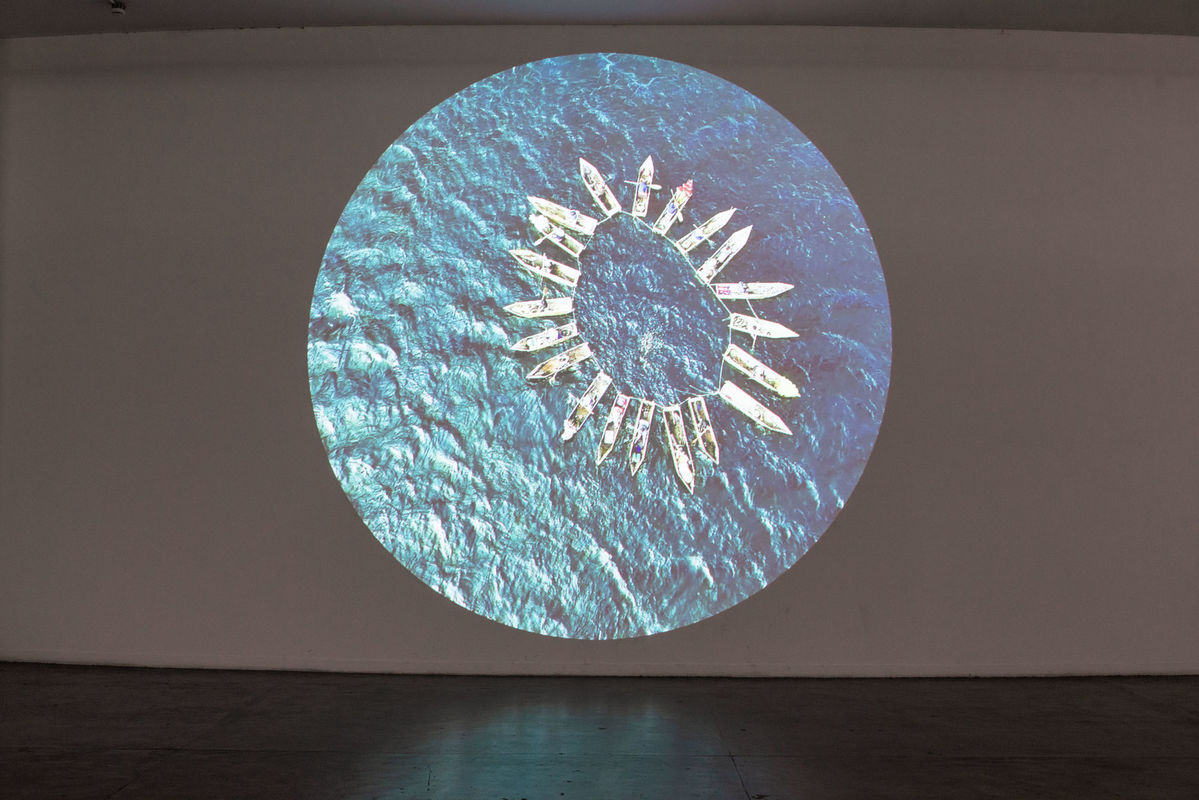
Manuel Chavajay
Lake Atitlán laps the shores of several villages in Sololá department, Guatemala. Protected by three gigantic volcanoes, it was formed by an eruption 84,000 years ago, and its shores are inhabited by descendants of the Cakchiquel and Tzutuhil communities. Manuel Chavajay, from San Pedro la Laguna, is one of them.
As an extension of this surprising place, his work explores it as a sacred place, where his existence takes place and is intertwined with the knowledge of his ancestors. From a local perspective, Atitlán is an epicenter of tourism and a place that has nourished the idea of what constitutes national heritage. However, for Manuel Chavajay, the binding forces that arise from the experience of belonging to this place are greater than any cliché. We notice this in Oq Ximtali (2017/2023), Manuel Chavajay’s video performance. This project is a record of community action. It arose from the artist’s concern with this location and from the invitation to a group of fishermen to tie up their traditional boats – known as cayucos – while they rowed in the translucent waters of the lake. The image, recorded by a drone, is an almost perfect circle of the twenty boats carrying various resources and symbolic objects. Boats flow with the water currents or exert opposing forces. At the end of the action, the artist suggested to the participants that they could untie themselves, move according to their will or coordinate to return together to the shore, which led to a moment of confusion. Oq Ximtali, in Tzutuhil, means “they have us tied up” or “we are tied up.”. This action explores or recovers the community dynamics that are crumbling and fading away due to the interference of opposing cultures. In Chavajay’s work, we always find reflections of an intense sense of historical pain that alternates with a sense of hope; a certain fear that emerges alongside resilience; the strength of labor on land and water merges with a great sense of vulnerability. In exceptional poetics, Oq Ximtali suggests this recurring feeling of impossibility that has become a prominent feature of the present and that threatens the balance of communities, human and interspecies relationships.
rossina cazali
translated from Spanish by ana laura borro
Manuel Chavajay (San Pedro La Laguna, Guatemala, 1982. Lives in San Pedro La Laguna) is a Mayan-Tz’utujil artist who has sought in his practice to construct images, actions and objects that provide poetic forms of denunciation and reclamation of his culture. His personal story, like that of most inhabitants of Guatemala, is marked by the violence of the armed conflict, of which he and his family were direct victims. Like other Indigenous artists of his generation, Chavajay thinks of contemporary art as a space for healing. His work refers to the wisdom of the practices and spirituality linked to the Mayan worldview: a deep connection with nature, life, and the energy present in things, reflecting a way of thinking and a way of living that survives despite the material and symbolic threats of the globalized world. In recent years, his works have been shown in institutions and exhibitions such as the Museum of Contemporary Art Santa Barbara (CA, USA), Centre Pompidou (Paris, France), National Gallery of Canada (Ottawa, Canada), Kunsthalle Wien (Vienna, Austria), SIART Biennial (La Paz, Bolivia), Bienal Internacional de Arte Contemporânea de Curitiba (Brazil) and La Bienal de Artes Visuales del Istmo Centroamericano (Guatemala, Nicaragua, Costa Rica, Panama and El Salvador). His works are part of the collections of institutions such as the Museo Ortiz Gurdián (León, Nicaragua), Museo Nacional Centro de Arte Reina Sofía (Madrid, Spain), Inter-American Development Bank (USA), National Museum of Ottawa (Canada), as well as private collections.

 Português
Português